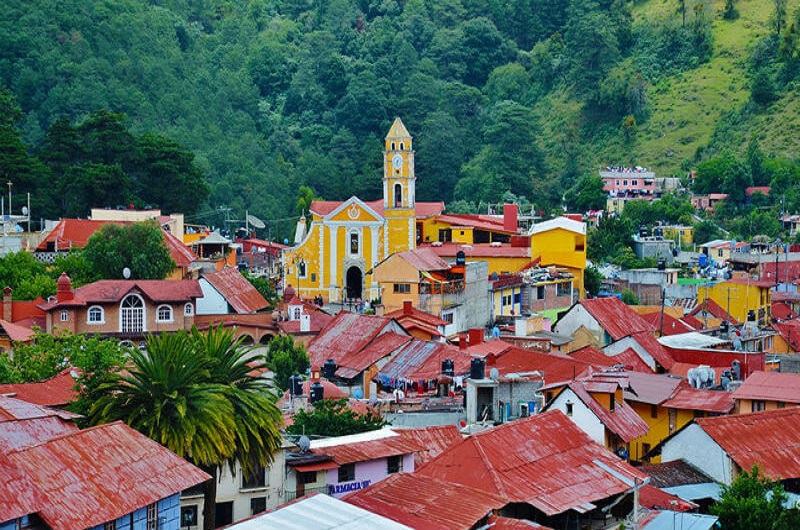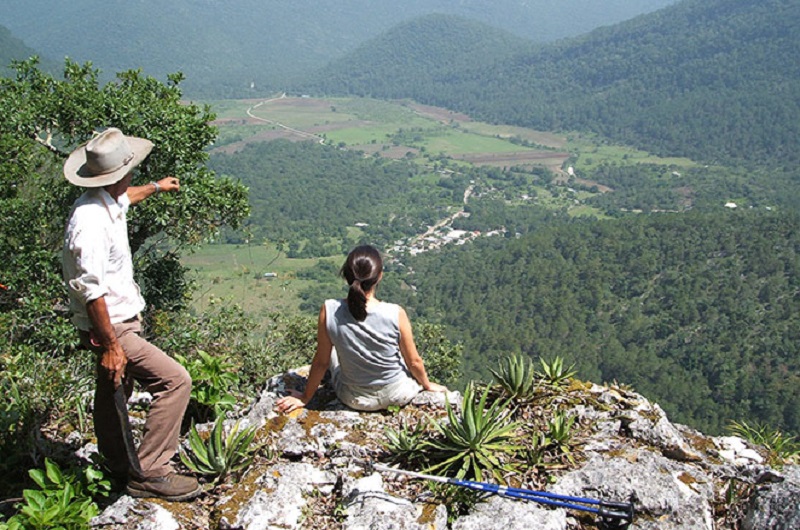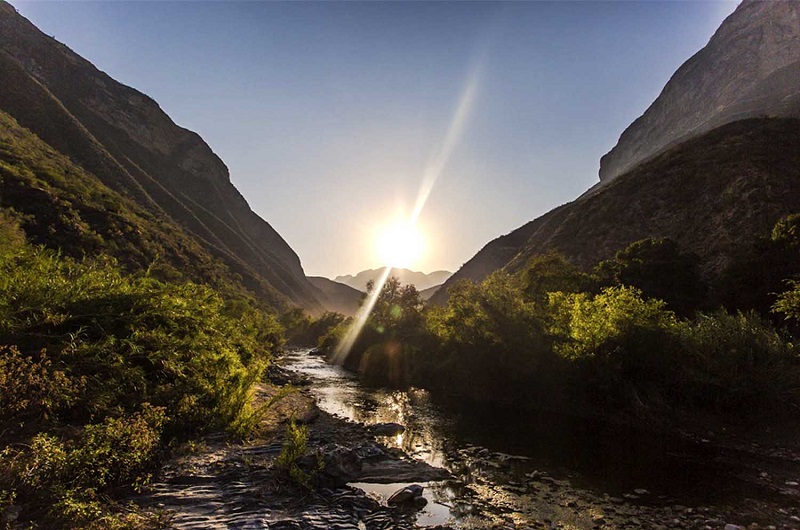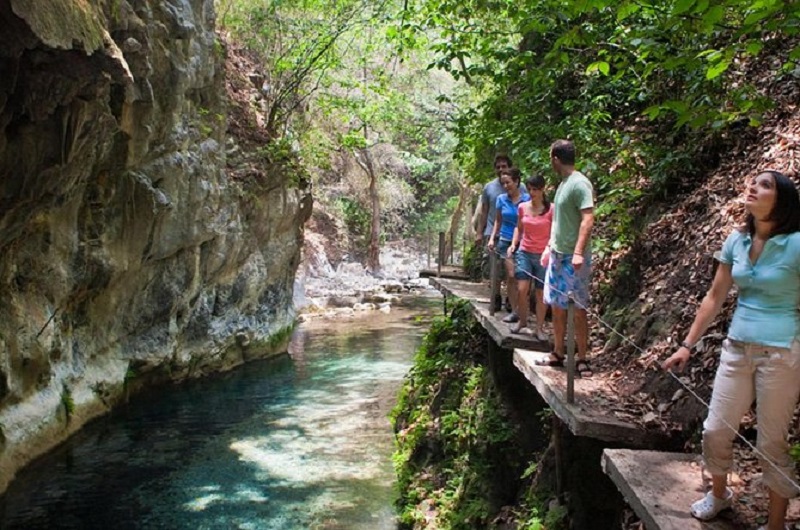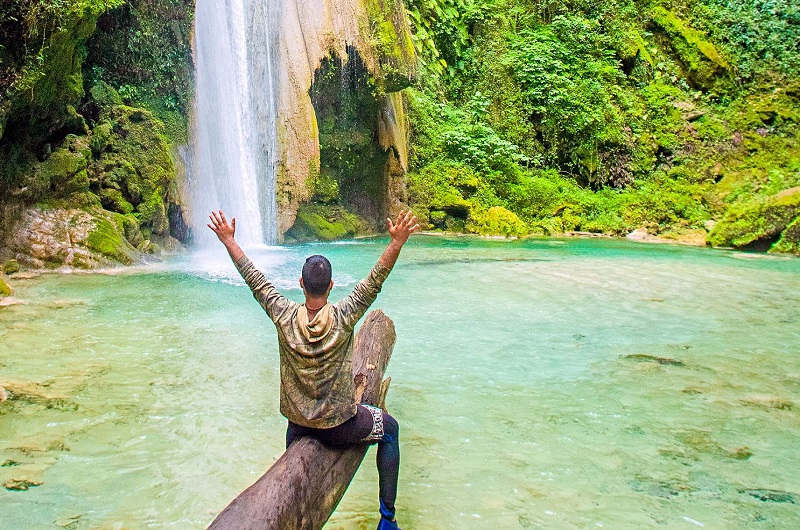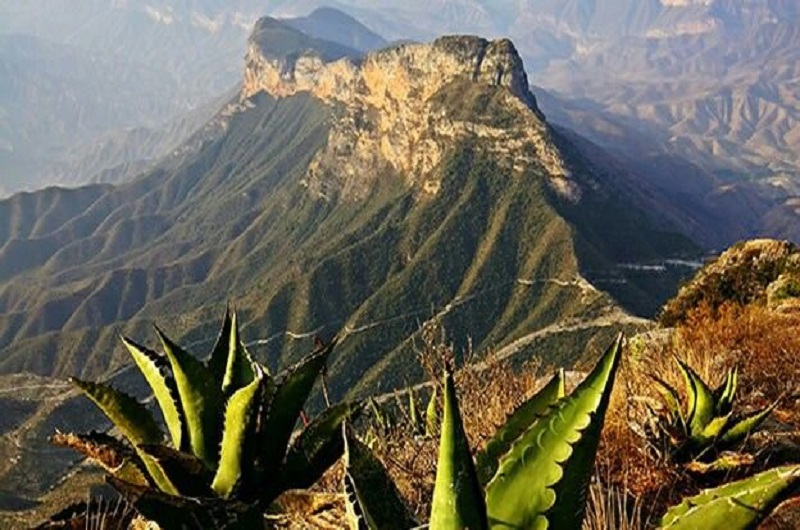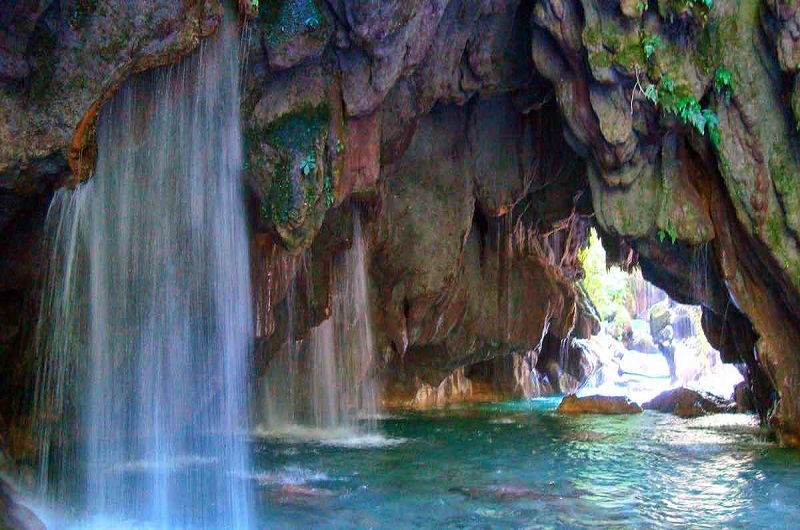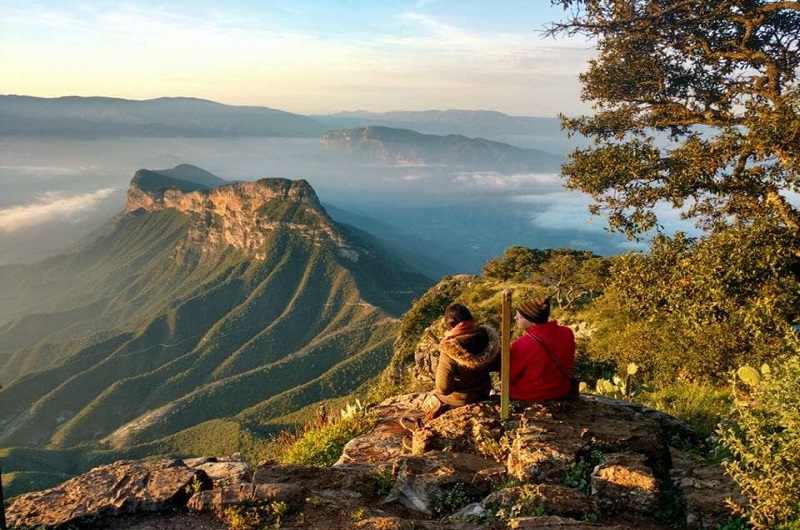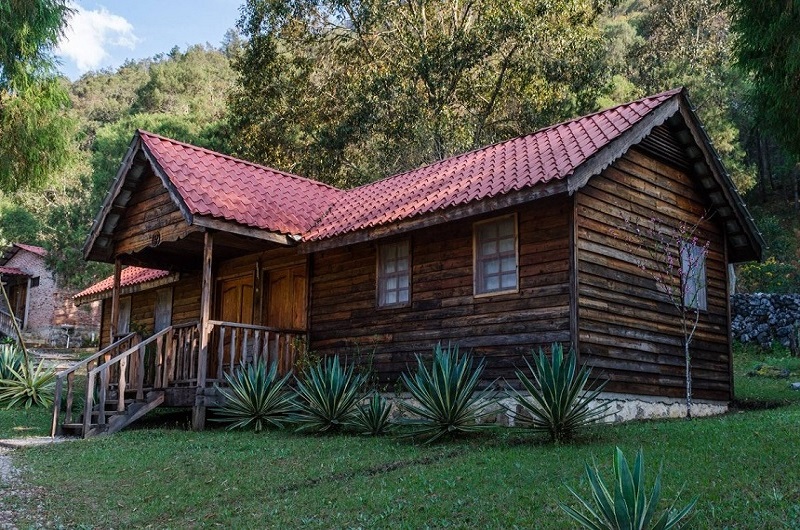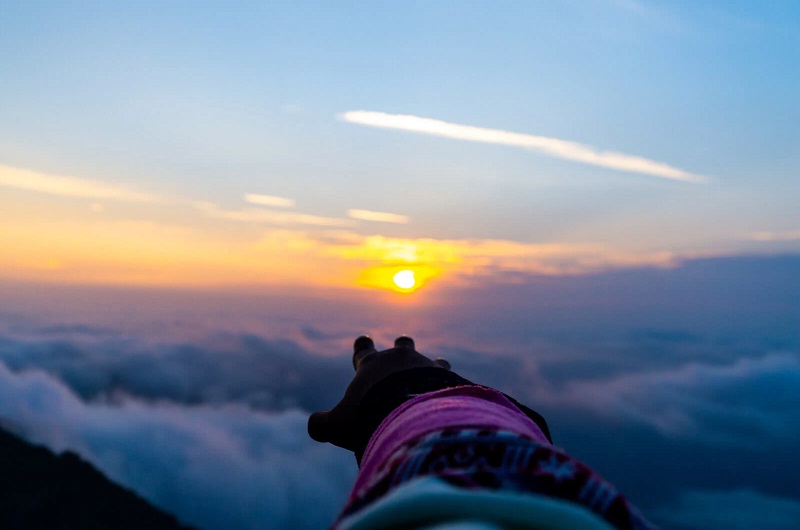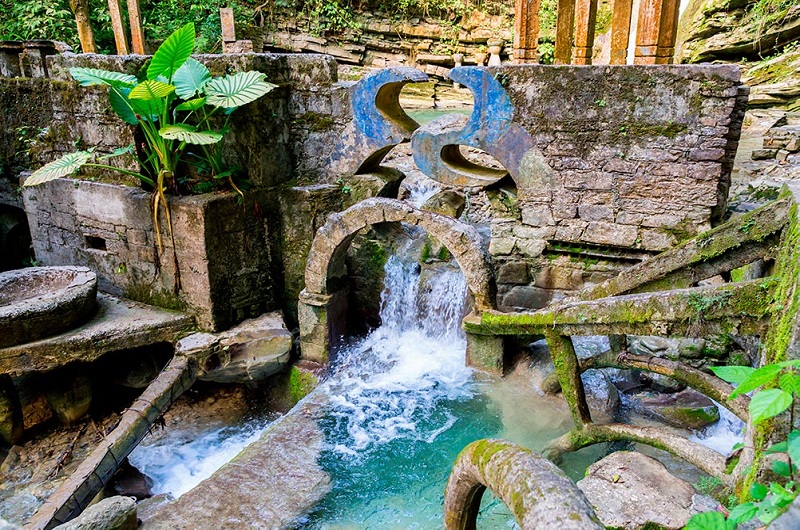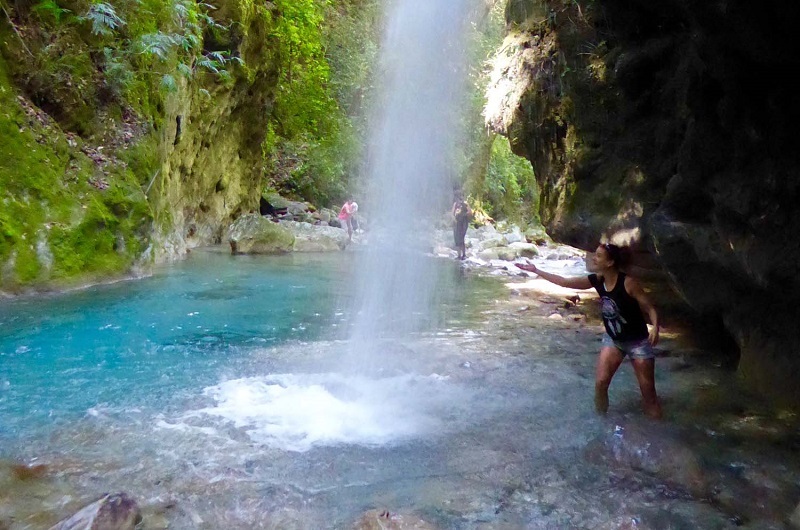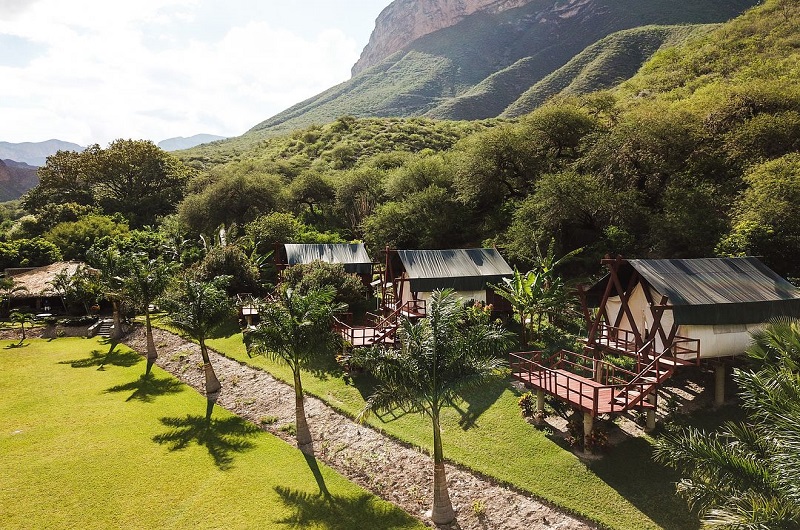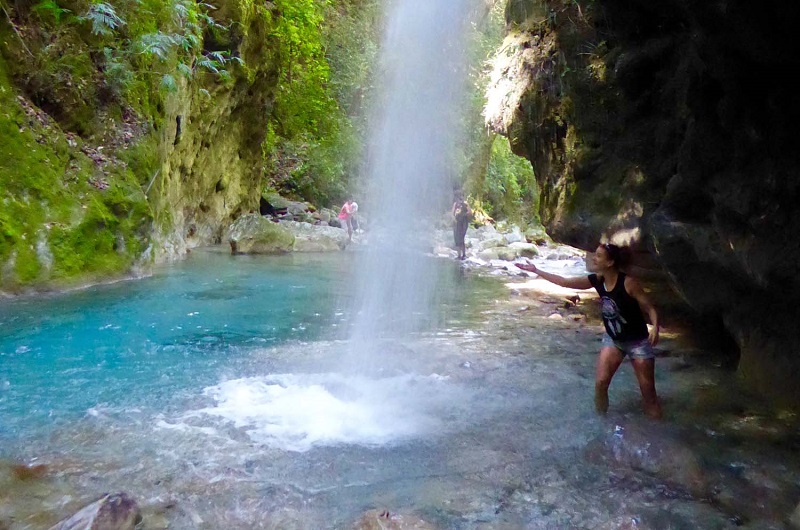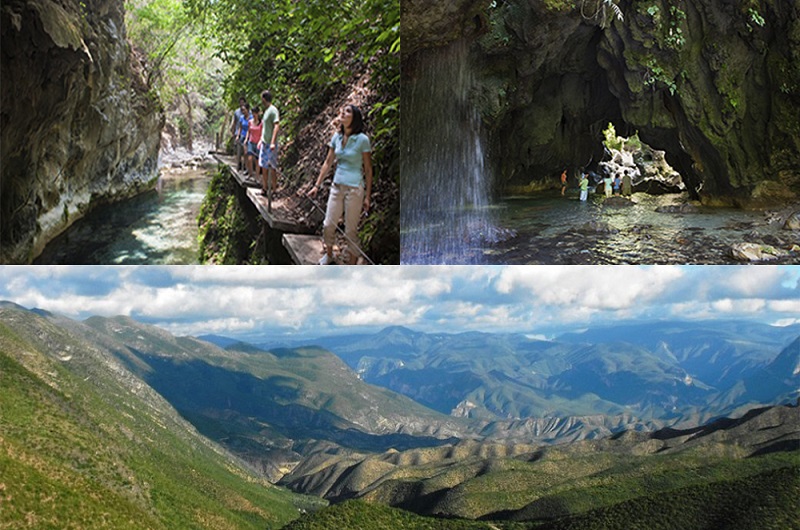Mexico inspires the Sierra Gorda in Queretaro – Mágico Sierra Gorda
Originally the area was inhabited by a people with a free soul who were famous for being most violently against evangelization and even preferring suicide to slavery, as in the old Chichimeca legend "Sacrificio del Cerro de la Media Luna" recorded.
The Chichimecan Pames resisted more than 200 years of conquest by the Spaniards during the so-called Guerra de Sangre y Fuego (war of blood and fire) in which they were virtually eradicated. Captain José de Escandón y Helguera, victor of this war, founded Jalpan de Serra in 1744 and the tasks of pacification and evangelization were left to the religious brother Friar Junípero Serra, known as the "prince of missionaries" or "the eternal pilgrim". The name of the Pueblo Mágico (Magical City) is made up of the Nahuatl voice for “place on sand” , Jalpan and the name of the monk.
Mexico inspires the Sierra Gorda in Queretaro – Mágico Sierra Gorda
The Evangelization was strengthened with the construction of five Franciscan missions in the region, which since 2003 have been declared a World Heritage Site by UNESCO . La Misión Santiago, in the heart of Jalpan, was the first to rise between 1751 and 1758.
Surrounded by mountains, forests, rivers, semi-desert areas, caves and spectacular natural landscapes, Jalpan de Serra is also a perfect destination to practice ecotourism. Even the Jalpan Dam , built using human technology, is so immersed in nature that it has become a protected wetland that is fundamental to the area's biodiversity and is home to an amazing variety of birds .
Mexico inspires the Sierra Gorda in Queretaro – Mágico Sierra Gorda
The Pueblo Mágico of Jalpan de Serra is 190 kilometers from the city of Querétaro. It is better to visit Pueblo Magico of Jalpan de Serra from February to June and from October to November to avoid rainy days. Activities in Jalpan de Serra
➢ Missions
Brother Junípero Serra built this mission dedicated to the Apostle Santiago. Construction began in 1751 and ended seven years later. The first of the five missions to be built in the region, it was devoted to defending the faith and laying the foundation for the evangelization that was just beginning. The baroque style of the facade shows some signs of syncretism and shows the work of indigenous hands. The depiction of Santo Domingo and San Francisco, spreaders of the faith, alludes to the triumph over idolatry of the Chichimeca Pames, who so long resisted conquest.
Mexico inspires the Sierra Gorda in Queretaro Mágico Sierra Gorda
The decoration also includes an unprecedented detail: the Spanish-Mexican double-headed eagle devouring a snake.
Anyone who has the chance should try to attend the five missions of great beauty to get an idea of the idiosyncrasies of the evangelizers and the traces of syncretism. The Misión Nuestra Señora de la Luz de Tancoyol was completed in 1766 and has the most ornate facade of all. The Misión Santa María de las Aguas de Landa ,builtby Brother Miguel de la Campa between 1760 and 1768, refers to the end of the spiritual conquest of the Sierra Gorda .
Mexico inspires the Sierra Gorda in Queretaro – » The future of touring, is Habibi Word Travel & Tour
Misión San Francisco del Valle de Tilaco is the smallest and simplest of them all . After all, the Misión San Miguel Concá, built by Brother José Antonio de Murgía, is probably the one with the most cultural mix of all five missions.
➢ Historical Museum of Sierra Gorda
To understand deeply the drama of the difficult colonization of this region , it is possible to see the Historical Museum of the Sierra Gorda , located in a fortress built in 1576 on the orders of Viceroy Martín Enríquez de Almanza. Is one of the most important buildings that served as a prison for 50 years . In seven rooms, the visitor follows the development of human settlements in the Sierra Gorda from prehistory to the present using pieces such as pictures, remains, works of art and documents. This is how the museography shows the transformative action
Mexico inspires the Sierra Gorda in Queretaro – Mágico Sierra Gorda
of the various groups that lived in the region including the Pames who have survived to this day despite the devastating war they waged against the colonizers . The museum's final ethnographic room pays homage to this survival.
➢ Jalpan Dam in the central part of the Reserve de la Biosfera Sierra Gorda (Sierra Gorda Nature Reserve)
Mexico inspires the Sierra Gorda in Queretaro – Mágico Sierra Gorda
A pleasant path in the shade of ahuehuete trees on the banks of the Jalpan River leads to the dam of the same name. After a distance of about one and a half kilometers you will reach a natural paradise that was created by human hands. The Jalpan Dam in the central part of the Reserve de la Biosfera Sierra Gorda (Sierra Gorda Nature Reserve) became an important wetland area, which was added to the list of Ramsar areas in 2004, an award for its large and diverse bird population (192 species have been registered ) and has become a place where migratory birds live.
For this reason, the dam is ideal for observing birds such as cormorants, herons, thrushes and various species of pigeons. But it's also perfect for those who enjoy hiking , biking or kayaking .
➢ caves
Mexico inspires the Sierra Gorda in Queretaro – Mágico Sierra Gorda
The mountainous landscape of the Sierra Gorda is home to a number of caves and grottoes that are fun to visit.
The Cueva del Puente de Dios of great natural beauty is located about three kilometers from the city center and follows the banks of the Jalpan Dam.
In the municipality of Tancama is the Cueva de la Diosa Cachum , the main deity of the Chichimeca Pames (mother of the sun, rain and harvest), who was a place of worship before the conquest.
Mexico inspires the Sierra Gorda in Queretaro – Mágico Sierra Gorda
In the Cueva del Diablo, eight kilometers away near Carrizal de los Sánchez, there are ATV night tours organized where a legend is told that explains the reason for the name.
It is also possible to visit the Cueva del Aguacate and the Cueva del Agua near the city of Valle Verde in the company of certified guides, which you can of course get from Las Almas Tour & Travel.
Mexico inspires the Sierra Gorda in Queretaro – Mágico Sierra Gorda
Mágico Sierra Gorda
Tour Duration:
The price depends on your wishes, as well as hotel choice, visits. We therefore ask you to provide details when booking. So we can start putting together an offer for you.
Price: US Dollar $ request
per person
